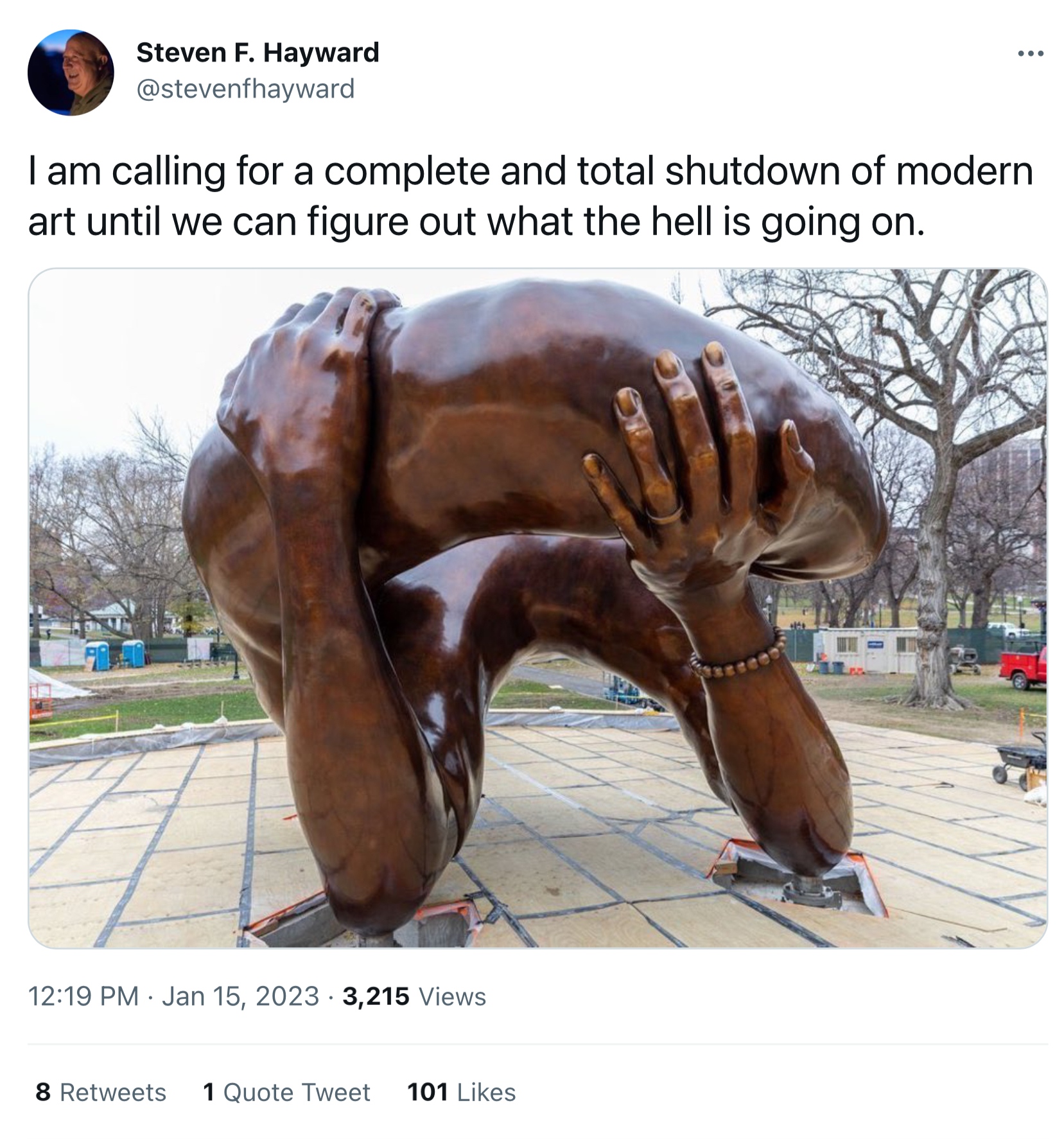FROM BAUHAUS TO OUR HOUSE: The Progressive Stranglehold on Art and Architecture.
The left today completely controls high art, architecture, and pop culture in America. Leftists run the selection board at the Grammys and the appointment committee at the American Academy of Arts and Letters. They dominate the board rooms at Burning Man and the Metropolitan Museum of Art. They run blockbuster movie sets in Hollywood and critically acclaimed productions in Sundance. They control the Rolling Stone editorial board and the Pulitzer Prize selection committee. They have complete control of the Smithsonian, the National Endowment for the Arts, and most state and local public art agencies. Every architecture school in America, even in conservative areas, is dominated by liberal professors and administration.
Design studio is the most important part of any architecture school curriculum, and there is no better course than studio to include leftist propaganda along with course material. Most studio projects have both a social and design component, and each semester in studio focuses on a different theme—environmental, socioeconomic, religious, and racial issues, for example. Just about any topic you might hear discussed at an elite San Francisco dinner party will find its way to the hypothetical building program, in studio, at any architecture school in the country. Liberals are educating young artists and architects, and for years, the right has just watched it happen.
If conservative America has any chance of bringing the arts and architecture back to neutral ground, they have to understand the origin of the left’s century-long grip on the arts and architecture. In the 1920s, most prominent creatives, including many American expatriates who complained about the lagging art scene in the United States, were living and working in Paris. Like the U.S., France had given this decade a nickname, “Les Annes Folles,” or “the crazy years.” Signals rang out over the streets of Paris on November 11, 1918, announcing the end of World War I. A British journalist, Helen Adam, wrote of the occasion, “It would have been strange if Paris had kept her head about her when the Armistice was signaled, and accordingly, she did not.” There was a party in the streets for the next four days; some, including many artists, would keep that party going for the next ten years. It lasted until the stock market collapse in America in 1929 brought the entire world economy to its knees.
Modernism was the new and prominent art movement at the time. Most art today, including architecture, visual art, music, theater, dance, and literature, was birthed by the modernist movement that dominated art innovation in Paris in the 1920s.
Modernism wasn’t a specific style, but was more of an idea. Part of the idea was to reject everything that came before. Modernists believed the world’s systems, styles, and traditions needed to be completely reimagined and reinvented, in hopes that the human condition would be radically transformed to make the world a fairer and more equitable place. The modernist vision in art was closely related to socialist beliefs of how business and industry should operate. Creatives believed art, especially architecture and urban planning, could fulfill the promise of equity among different socio-economic classes.
And yesterday, we all saw the dead-end of a century of modern art:

